By Jan Worth-Nelson
After a half hour of speeches in scalding sun, about 50 kids and their parents lined up for the main event at the Mott Park Recreation Area Saturday: one by one, reaching into a bucket of muddy water, gently cupping a six-inch long, slimy baby sturgeon, and dropping it into the Flint River.
The event was a dual celebration: first, reintroducing 125 hatchery-reared juvenile lake sturgeon into the Saginaw Bay Watershed (of which the Flint River is part), and second, cutting the ribbon to the not-quite-completed Mott Park Paddlers’ Landing–restoration projects financed by multiple local, state and national partners.
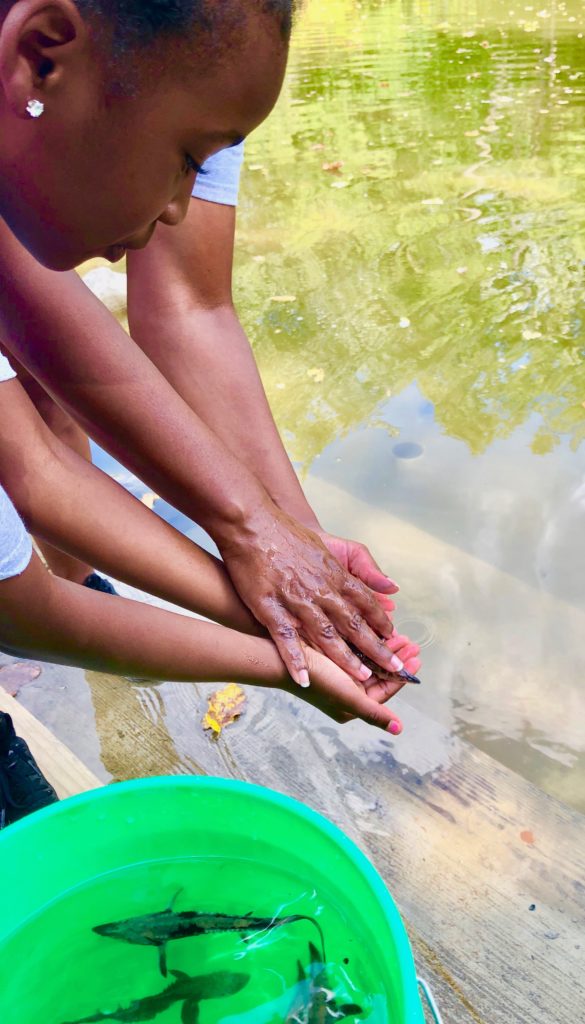
Leila Robinson, 8, of Flint, is helped to put a baby sturgeon into the Flint River by DeAndra Larkin (Photo by Jan Worth-Nelson)
It’s all part of the protection and promotion of the Flint River and its inhabitants, according to Rebecca Fedewa, executive director of the co-sponsoring Flint River Watershed Coalition (FRWC).
The Paddlers’ Landing project was financed by a Patronicity campaign sponsored by the Michigan Economic Development Corporation (MEDC), with $50,000 in state funds matched and exceeded by donations from 600 individuals and organizations.
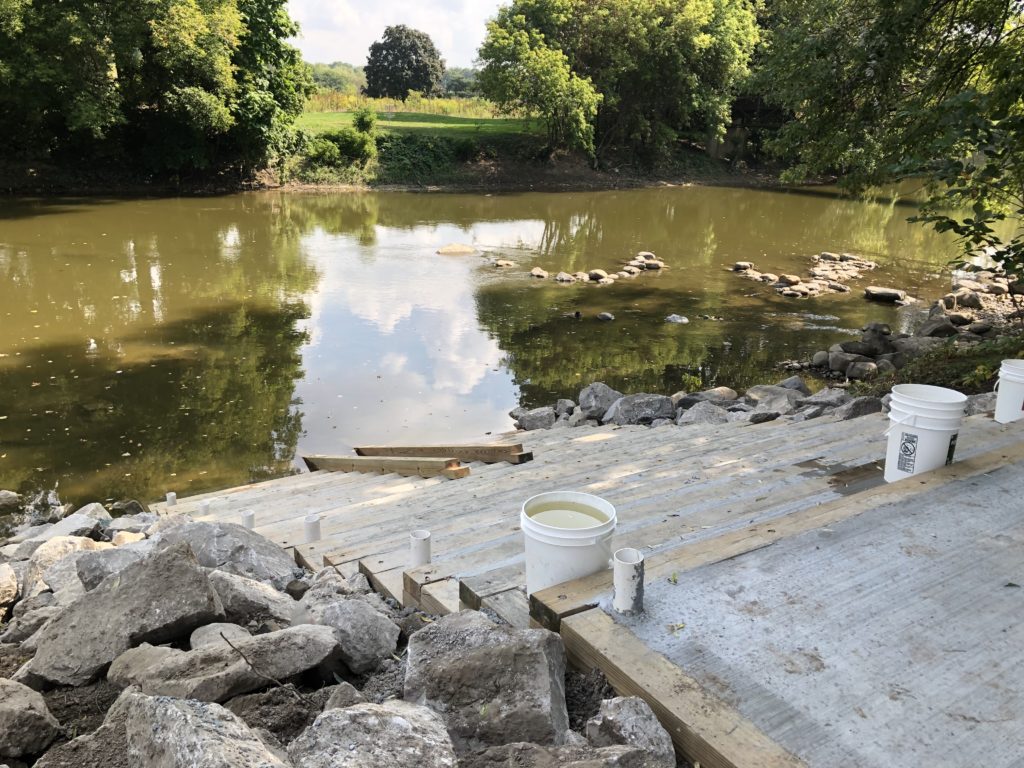
Not-quite-finished Paddlers’ Landing at the Mott Park Recreation Area (Photo by Jan Worth-Nelson)
The release is a gesture “to ensure lake sturgeon thrive long into the future,” Fedewa said. Once they make their way to the Saginaw Bay, the prehistoric sturgeon will grow — up to six or seven feet or 300 pounds, living more than 100 years– and eventually, in about about 20 years–will spawn.
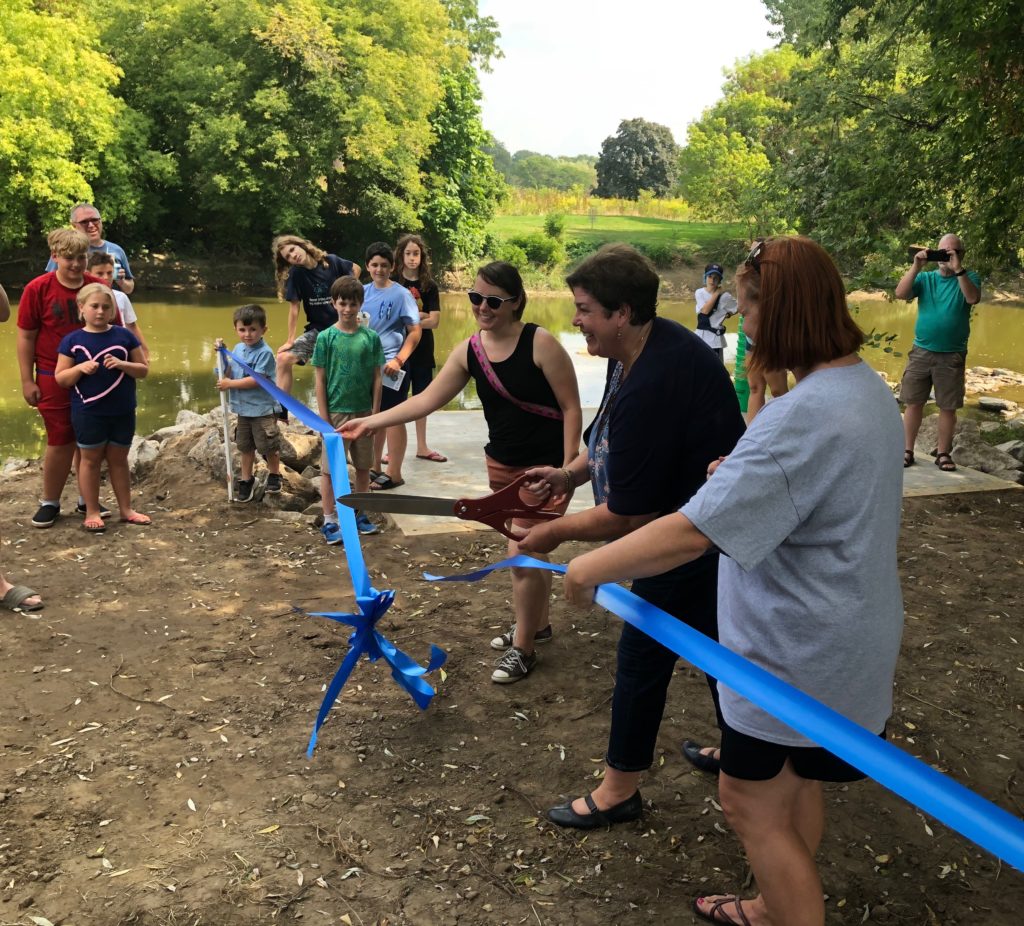
Cutting the ribbon to the crowd-funded Paddlers’ Landing at Mott Park are (from left) Corridor Alliance Manager Sarah Scheitler, City of Flint Director of Planning and Development Suzanne Wilcox, and FRWC Executive Director Rebecca Fedewa (Photo by Jan Worth-Nelson)
Even though sturgeon have been around for millions of years, Shannon Hanna, deputy director of the Michigan Department of Natural Resources, said they are now officially listed as a threatened species–due mostly to pollution, overfishing and habitat loss. Their spawning sites in Black Lake have dropped from 33 to 8, and their numbers fell from 1500 to about 500.
The sturgeon babies released today carry trackers, meaning it may sometime be possible to identify if sturgeon reappear in the Flint River whether they were initially released here.
Representatives from many partnering agencies were present sent for the celebration and release — including Chris Flores from U.S. Representative Dan Kildee’s office, The Michigan Department of Natural Resources, The Saginaw Chippewa Indian Tribe, the U.S. Fish and Wildlife Service, and the Great Lakes Fishery Commission.
According to a 2018 Detroit Free Press story,
Sturgeon have been called living fossils because they’re essentially leftover dinosaurs. The species dates back 136 million years to the Triassic Period, and they’re different from modern fish. They have no teeth or bones; their skeleton is cartilage. They have no scales; instead they have leathery skin.
“Its evolution is the same as T-Rex,” James Boase from the U.S. Fish and Wildlife Service told a rapt group of children staring at the little sturgeons awaiting release in a tank.
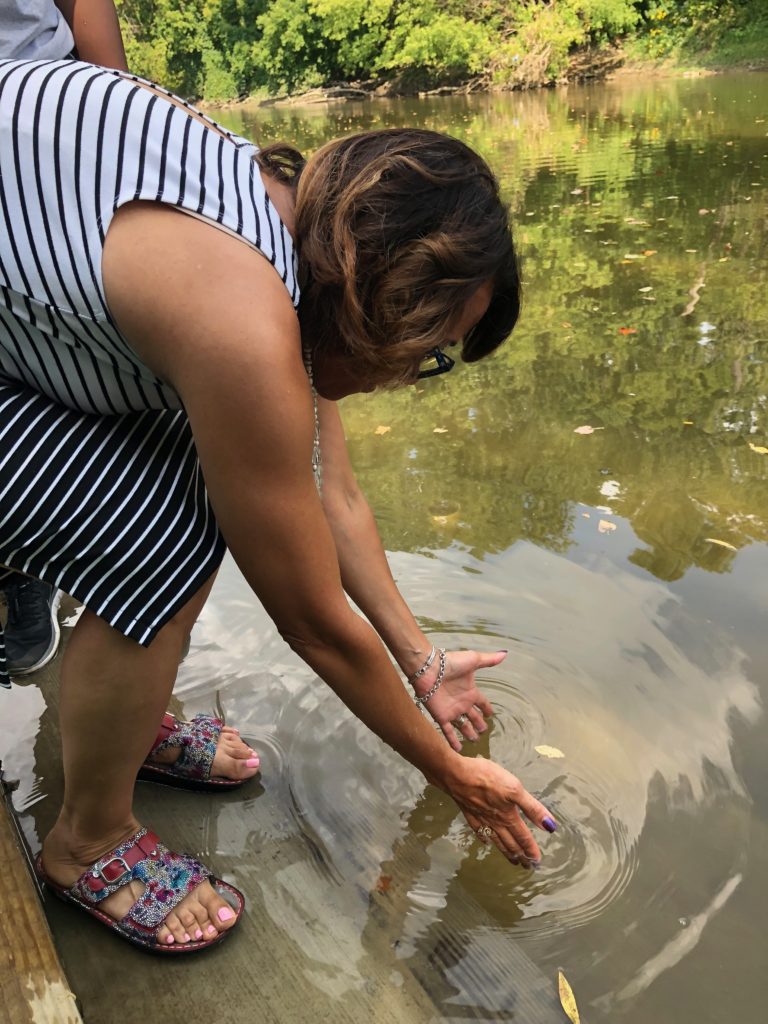
Mayor Karen Weaver releases a baby fish (Photo by Jan Worth-Nelson)
The Free Press story further said “Sturgeon have been called living fossils because they’re essentially leftover dinosaurs. The species dates back 136 million years to the Triassic Period, and they’re different from modern fish. They have no teeth or bones; their skeleton is cartilage. They have no scales; instead they have leathery skin.”
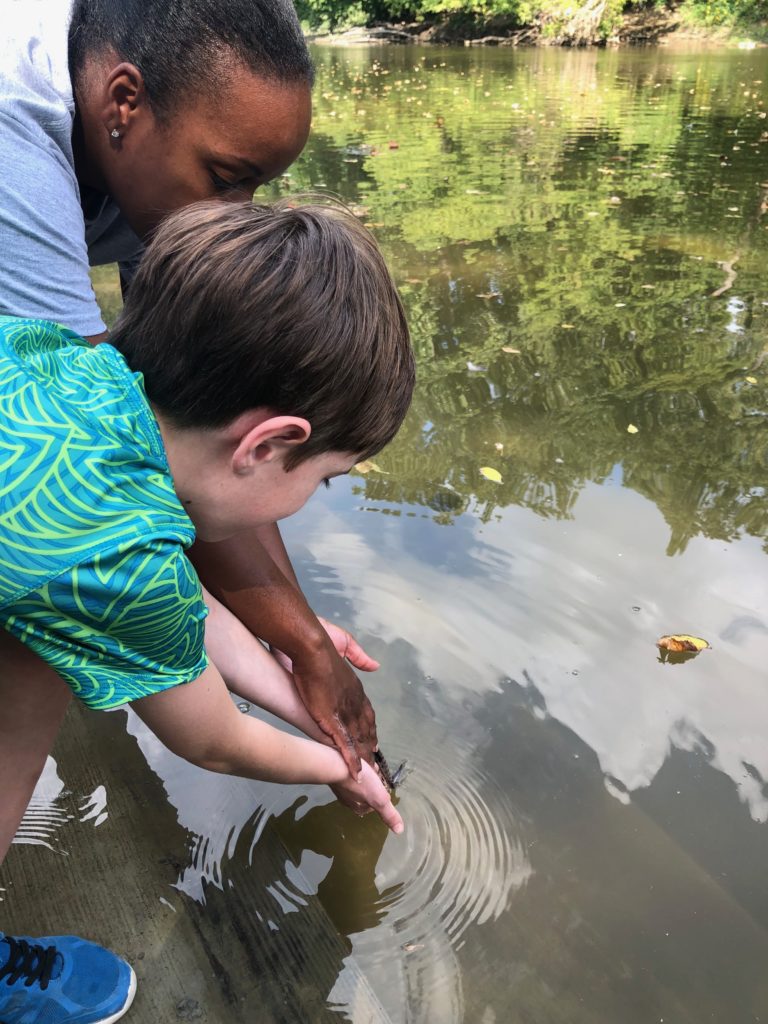
DeAndra Larkin helps another child release a baby into the wild (Photo by Jan Worth-Nelson)
Banner Photo: Kids waiting for their chance to release sturgeon at the Flint River (Photo by Jan Worth-Nelson)
EVM Editor Jan Worth-Nelson can be reached at janworth1118@gmail.com.


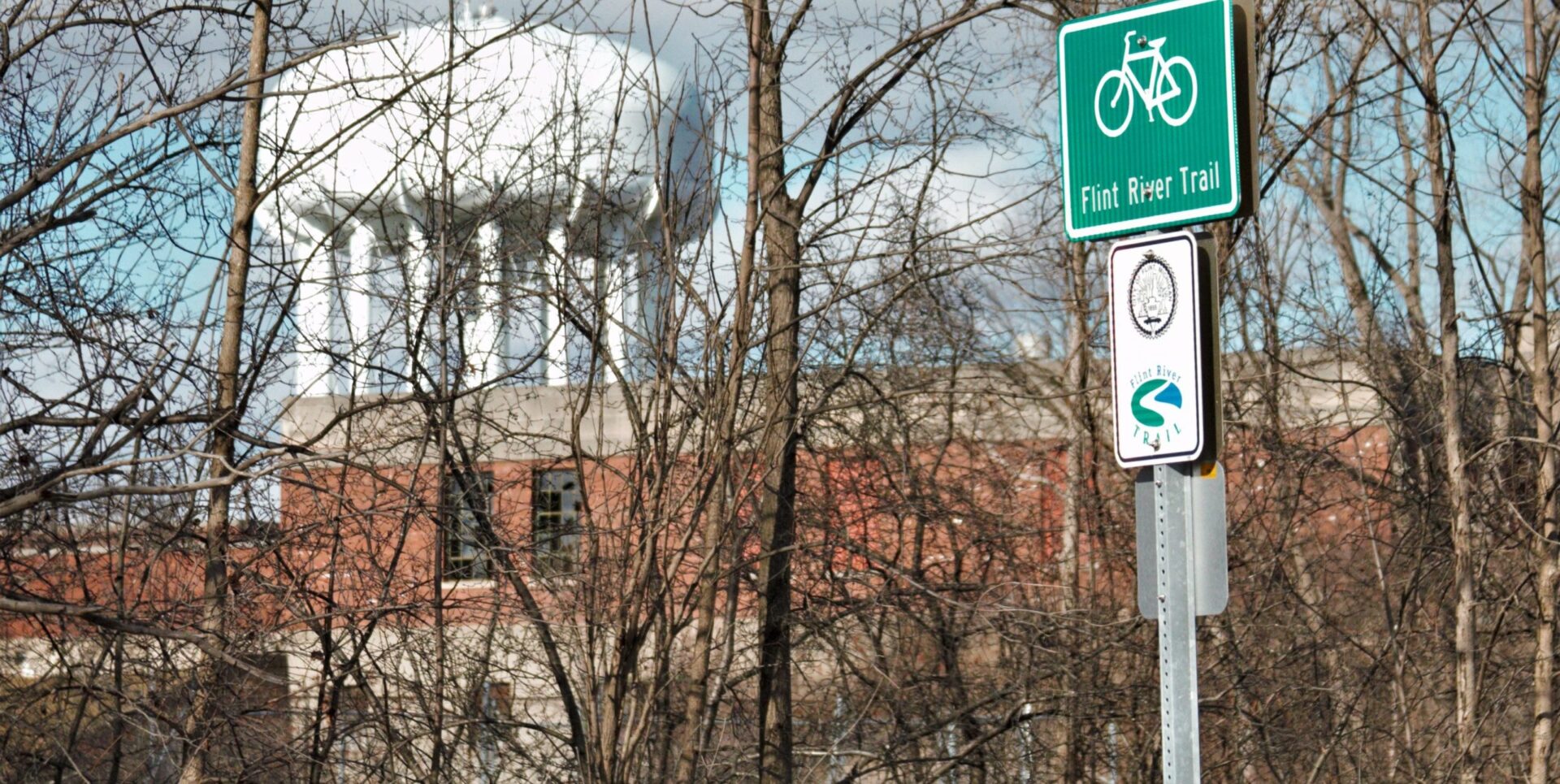





You must be logged in to post a comment.